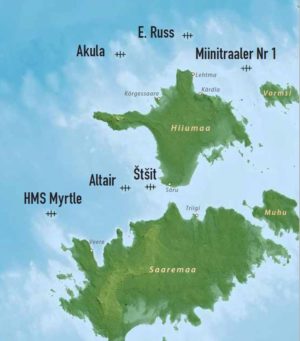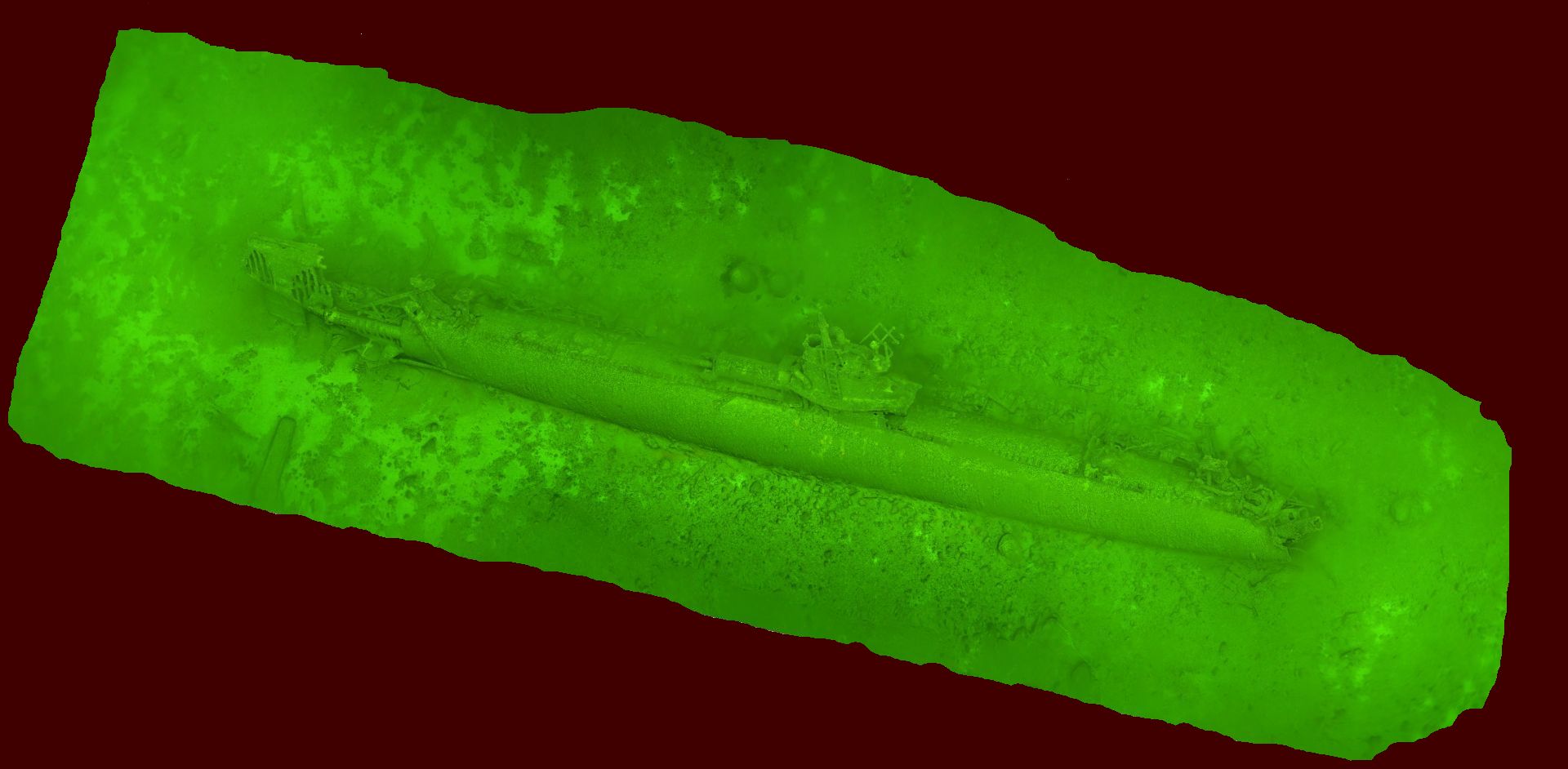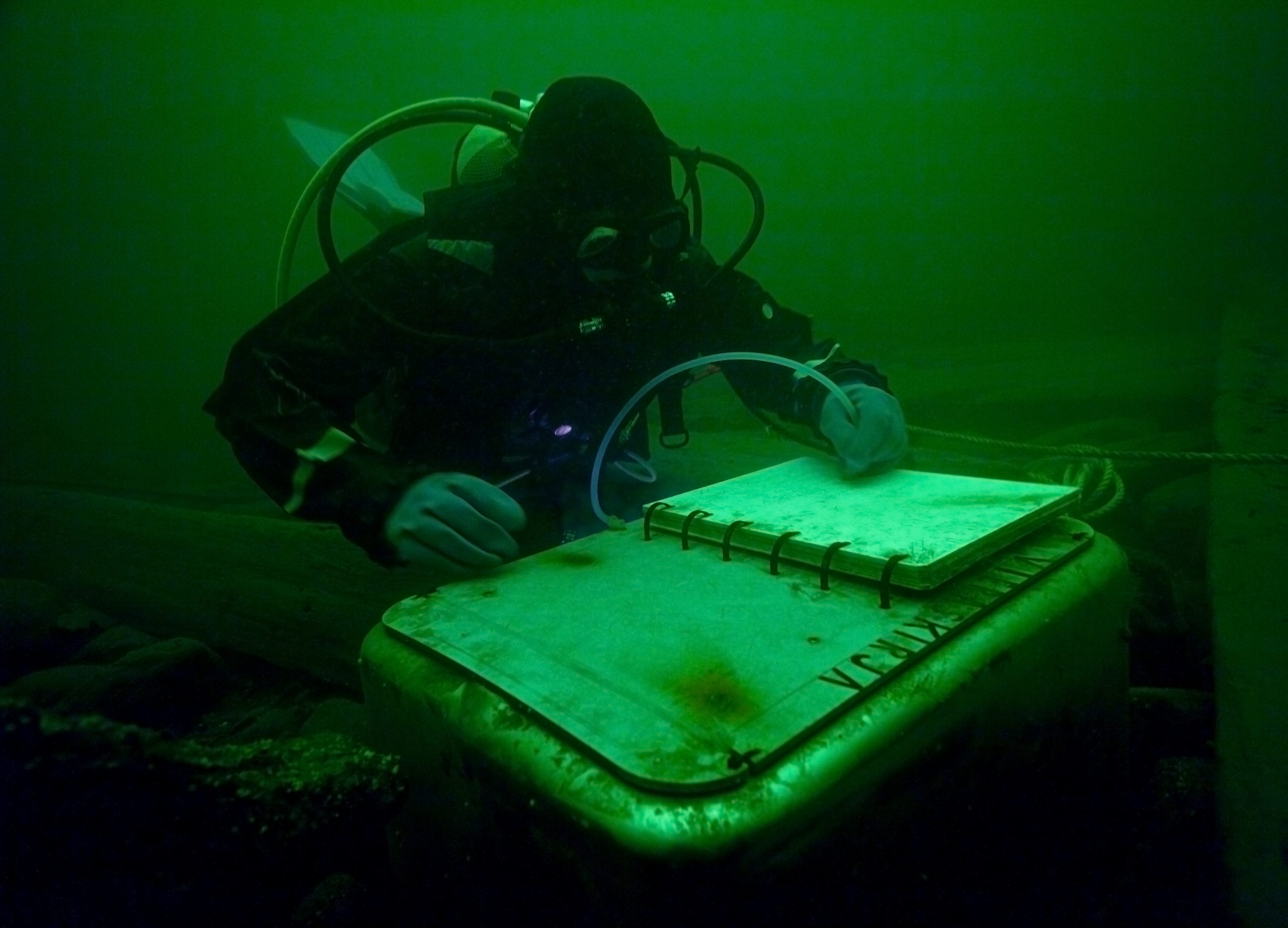Underwater museum in the middle of the Baltic Sea
The wrecks of ships sunken in the Baltic Sea are well-preserved and provide an extraordinary opportunity to take a look at the everyday life of sailors who lived hundreds of years ago. The Baltic Sea is a big underwater museum waiting to be visited. The Central Baltic project BALTACAR manager Marii Asmer reflects on experiences related to demonstrating the huge tourism potential of the underwater cultural heritage of the Baltic Sea.
Every now and then, one can notice a perception among divers that there is not much to look at in the Baltic Sea, and even if there is, it cannot be seen due to poor visibility. However, this is not the case at all. There are areas where divers cannot see beyond their hands, depending on different factors such as flowering of aquatic plants, currents etc., yet there are also areas where visibility reaches tens of meters. It is therefore crucial to choose suitable areas for developing diving tourism.
In order to demonstrate tourism potential of the unique underwater cultural heritage, various institutions from Estonia, Finland and Sweden joined forces under the leadership of the Estonian Heritage Board and project BALTACAR. Project manager Marii Asmer notes: “We have a glorious underwater cultural heritage here in the Baltic Sea that is definitely worth a visit.” However, Marii admits that diving in the Baltic Sea poses a much greater challenge than diving in warm, transparent waters. Increasing interest in visiting the underwater museum in the Baltic Sea is reflected by numerical feedback: more and more divers visit wrecks every year. “We have realized that diving in the Baltic Sea offers more, and the experience that visitors get is awesome.”

Good preservation conditions for shipwrecks
The bottom of the Baltic Sea is one of the most densely wrecked areas in the world. Its cold, dark water with low salinity and otherwise poor living conditions create a good environment for survival of the wreckage. As the Baltic Sea has a long and dignified maritime history, there is plenty to see here. While the salinity, daylight and temperature of the water in the southern seas often affect wood badly, resulting in rapid degradation, the Baltic Sea has particularly good preserving conditions for wooden shipwrecks.
Good conservation conditions are crucial as historical shipwrecks are important elements of the common past of the countries around the Baltic Sea. Shipwrecks are also non-renewable resources used for research, interpretation of historical events, as well as for educational purposes and development of cultural tourism.
Safer diving both for divers and shipwrecks
Depending on the level of equipment of the diving vessel, both finding the wreck and throwing the anchor can take a long time or even fail, in the worst case scenario damaging the wreck. Therefore, the first step in the process of providing access to project BALTACAR sights was installation of anchor buoys on wrecks in Estonian and Finnish waters. “We installed anchoring buoys to the bottom of the Baltic Sea to make locating wrecks easier and allow divers to anchor their boat. Thanks to this, they don’t have to drop their anchor on the seabed and risk damaging the wreck,” says Marii. Diving is also made safer by providing 3D models for the diver in order to explore wrecks and do preliminary work before going under water.

In addition to divers, responsible access to shipwrecks is also safer for the wrecks as elements of cultural heritage. While prohibiting or restricting wreck diving was a fairly common practice in the past, this is not the case today, and thanks to project’s documentary work and 3D models, there is now a comprehensive overview of shipwrecks. Data collected by the protectors of cultural heritage is indispensable, including an overview of how visiting has affected the wrecks.
Like a real museum
First underwater wreckage park was built by the Finnish National Heritage Board in 2000 on the Swedish liner Crown Prince Gustav Adolf, which sunk in 1788 near Helsinki. The shipwreck is located on the Helsinki-Tallinn shipping line and it would be impossible to dive there without anchor buoys. Many Finnish divers celebrate start of the new diving season with their first dive in this wreck park.
As divers begin to descend to the buoys, they are greeted by an information board with a map that marks their location with red dots, suggesting the exact location of the visitor in the underwater museum, just like in a real museum. The anchor buoy chain connected to the wreck is so close that it is nearly impossible to miss it, which ensures that the diver is in the right place and does not have to spend valuable time in water locating the wreck.
Information boards in Estonian waters are somewhat simpler, since the so-called bottom time here is shorter than in Finnish waters due to the greater depths, and there would be no time to read longer stories here. The depths of Finnish waters are shallower, which made it possible to install pyramid-shaped concrete constructions with texts that give insights into the history of the wrecks and provide other tips and tricks regarding the visit.

Common approach to presenting underwater heritage
Aim of the project was to unlock the tourism potential of the Baltic Sea underwater cultural heritage by creating better solutions for visiting unique underwater objects at their original location. The project created a tourist attraction in the Central Baltic area, consisting of shipwrecks in Estonia, Sweden and Finland. The wrecks are equipped with anchor buoys and information boards in situ. History about the wrecks, as well as 3D models, is available on the web. Forces were also joined in order to jointly market and promote underwater heritage tourism to raise awareness of the unique underwater cultural heritage of the Baltic Sea, good preservation conditions and the potential of the underwater heritage in developing tourism in the region.
We can also introduce the underwater heritage to those who never go underwater.
Marii Asmer, BALTACAR Project Manager
“In cooperation with the three countries, we wanted to show in a comprehensive way that the unique heritage of the Baltic Sea is worth visiting. In addition to the underwater heritage, introducing the area, for example by on-ground excursions, is equally important,” tells Marii about different aspects of cross-border cooperation. Although she admits that that the project created a niche, interest in it is high. Marii adds: “We can also introduce the underwater heritage to those who never go underwater.”
When it comes to how COVID-19 has influenced the diving activities this summer, there is a lot of uncertainty at this point as the situation changes rapidly. Currently, focus is on domestic tourism, and diving activities are, at least to some extent, still ongoing. If (travel) restrictions all around Europe will be relieved this summer, foreign tourists will again have a chance to visit underwater museums in the Central Baltic area.
Making the rich underwater cultural heritage of the Baltic Sea more accessible for divers and other interested parties was funded by the Central Baltic Programme in the period of 2014-2020. Aim of the programme is to strengthen cooperation between the regions of Estonia, Finland, Sweden and Latvia in order to have a more competitive economy, better connections, more sustainable use of resources and a more socially inclusive living environment in the programme area.

